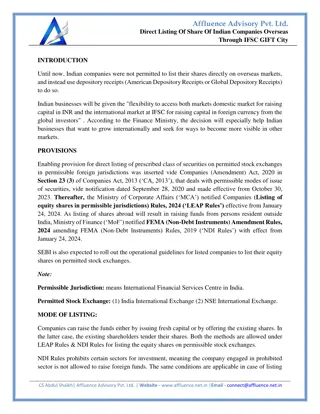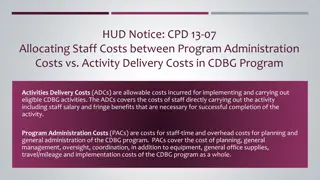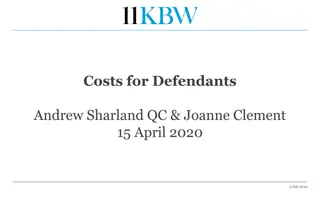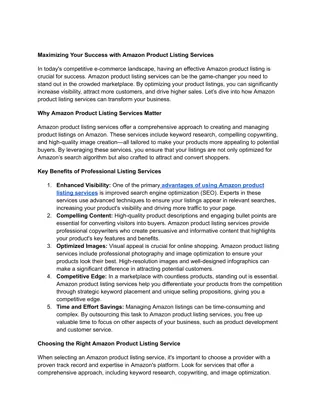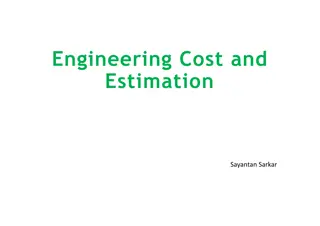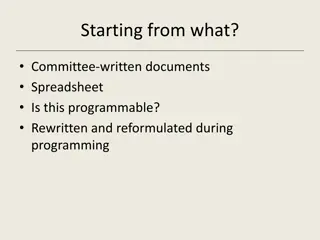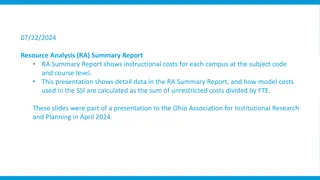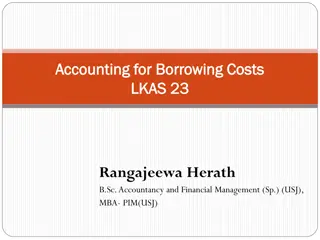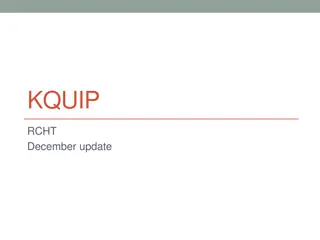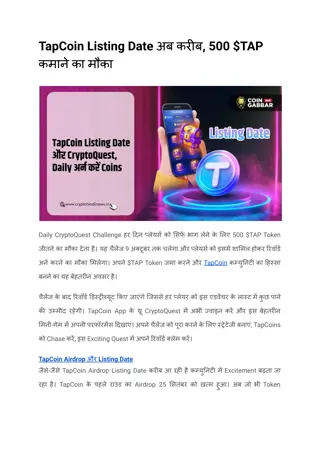
Research Costing: Direct and Indirect Costs Explained
Learn about direct and indirect research costs, including eligible expenses, categories, examples, and considerations for international research. Explore key insights for improving research costing and pricing in low- and middle-income countries.
Download Presentation

Please find below an Image/Link to download the presentation.
The content on the website is provided AS IS for your information and personal use only. It may not be sold, licensed, or shared on other websites without obtaining consent from the author. If you encounter any issues during the download, it is possible that the publisher has removed the file from their server.
You are allowed to download the files provided on this website for personal or commercial use, subject to the condition that they are used lawfully. All files are the property of their respective owners.
The content on the website is provided AS IS for your information and personal use only. It may not be sold, licensed, or shared on other websites without obtaining consent from the author.
E N D
Presentation Transcript
Research costs Direct research costs Also called eligible costs, attributable costs. Costs that are incurred exclusively because of research, such as salaries for staff employed specifically to implement the research and consumables used in the research project. Indirect research costs Expenses that would be incurred irrespective of the project, but which pay for goods and services that are essential for research implementation. Also called: overheads; facilities and administrative costs; core costs, non- project attributable costs; research management and support costs. Full cost of research Direct costs + indirect costs.
Direct costs categories and examples Research staff employment- including salaries (with inflation increment for multi- year project), benefits and recruitment costs. Outsourcing- payments for contracts and consultants that implement specific parts of research Student bursaries- including course fees, stipends and benefits. Communications- telephone, postage and couriers. Travel- transport, accommodation, visa and per diems. Facilities- built or refitted specifically for the project Equipment- purchased specifically for the project Consumables- including fuel, laboratory reagents and stationery. Others- participant care costs, insurance, reference materials, ethical and regulatory approvals, training and professional development.
Indirect costs categories and examples Infrastructure Rental of existing buildings, laboratories or offices; Utility costs- water, electricity, cleaning and waste management Security and insurance Depreciation- infrastructure and equipment Management and administration Research support including procurement, human resources, audit, legal and other management or administrative staff costs.
Costs to consider in international research Exchange rate fluctuations- if grant is not funded in the currency of expenditure Bank fees Inflation
Reference Information in these slides is summarised from ESSENCE on Health Research. (2020). Five keys to improving research costing and pricing in low- and middle-income countries- ESSENCE Good Practice Document. Retrieved from https://tdr.who.int/docs/librariesprovider10/essence/essence- fivekeys2nded2020-pdf.pdf?sfvrsn=9f37e717_8&download=true

